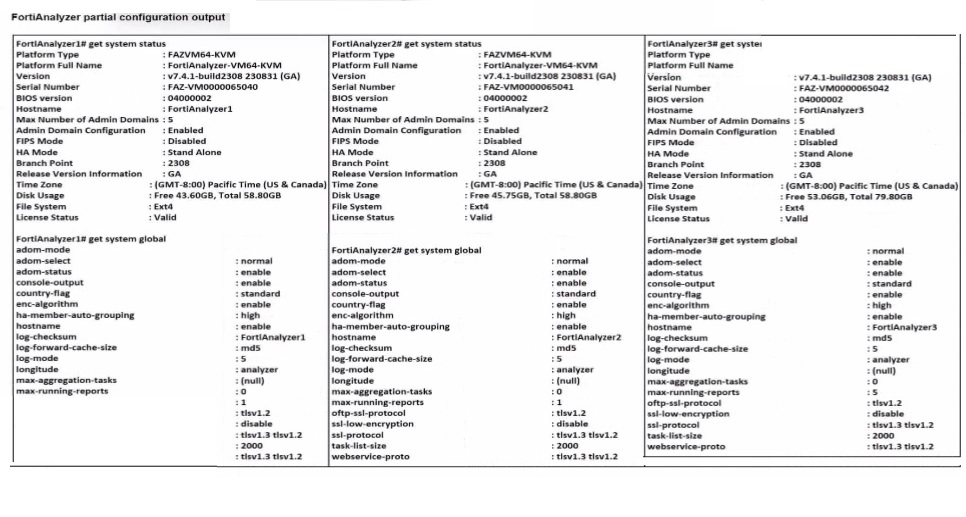Correct : C
The FortiSOAR management extension is designed as an independent security orchestration, automation, and response (SOAR) solution that integrates with other Fortinet products but requires its own dedicated device or virtual machine (VM) environment. FortiSOAR is not natively integrated as a container or service within FortiAnalyzer or FortiManager, and it operates separately to manage complex security workflows and incident responses across various platforms.
Let's examine each option to determine the correct answer:
Option A: It requires a FortiManager configured to manage FortiGate
This is incorrect. FortiSOAR operates independently of FortiManager. While FortiSOAR can receive input or data from FortiGate (often managed by FortiManager), it does not require FortiManager to be part of its setup.
Option B: It runs as a docker container on FortiAnalyzer
This is incorrect. FortiSOAR does not run as a container within FortiAnalyzer. It requires its own dedicated environment, either as a physical device or a virtual machine, due to the resource requirements and specialized functions it performs.
Option C: It requires a dedicated FortiSOAR device or VM
This is correct. FortiSOAR is deployed as a standalone device or VM, which enables it to handle the intensive processing needed for orchestrating security operations, integrating with third-party tools, and automating responses across an organization's security infrastructure.
Option D: It does not include a limited trial by default
This is incorrect. FortiSOAR installations may come with trial options or demos in specific scenarios, especially for evaluation purposes. This depends on licensing and deployment policies.
Options Selected by Other Users:

